The Need to Feed Protected Fat
The principle reasons that we feed protected fat to dairy cows are to raise the energy density of the diet and 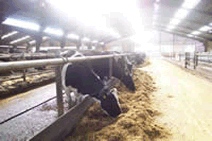 to meet the requirement for different fatty acids in the cows diet.
to meet the requirement for different fatty acids in the cows diet.
As dairy herd yields have risen, dairy herd fertility has fallen consistently over many years. Often the blame is laid at the door of the Holstein breed. The real problem has been the failure of the industry to properly manage the transition cow and the cows rumen during early lactation or to feed diets of sufficiently high energy density to meet the energy requirement of the high yielding dairy cow.
We have always known that cows will not get in calf if they are
thin and losing weight
Whilst protected fats appear expensive per MJ of energy, because of their high digestibility their true net energy cost is often comparable with other energy sources. Fats have a net energy value of up to 4.6 times higher than molassed sugar beet pulp. Protected fats fed at around 250-600gms per cow are a simple and convenient means of raising the energy density of the cows diet. High yielding cows need an energy density or M/D of between 12.2 and 12.5 MJ/kg DM. The results speak for themselves. When feeding fats at these levels cows perform better, lose less weight and hold better body condition scores. Most importantly they are much easier to get back in calf. This has been confirmed by recent research which demonstrates that feeding protected fats to dairy cows raises blood cholesterol levels resulting in increased progesterone levels. This has very important implications because the evidence shows that fertility rates and bulling activity in particular are considerably enhanced.
Making best use of the wide range of feeds available is an area where our nutritional expertise is of particular benefit to our customers.
Traditional Protect Fats
Calcium Soaps Protected Fats - Magnapac / Megalac
These palm fats are produced by reacting palm fatty acid distillate with calcium hydroxide to form a calcium soap. This process protects the fat and allows it to largely bypass the rumen, reducing degradation and allowing the fat to be efficiently utilised by the cow. Calcium soaps are the cheapest and most widely used protected dairy fats and have been used in the UK for many ye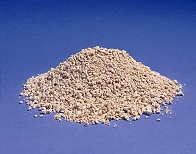 ars.
ars.
Calcium soap protected fats are available under a number of brand names, all of very similar nutritional characteristics. Typically they contain 84% oil, 9% calcium, 5% moisture and are 32 MJ / kg DM with a fatty acid profile of 44% C16 palmitic acid, 40% C18:1 oleic acid and 9.5% C18:2 linoleic acid. Calcium soap protected fat is a useful cost effective source of energy available at competitive prices especially when bought in 12 tonne or 24 tonne artic loads in 25 kg bags.
Calcium soap protected fats, are soaps and as such are unpalatable and as such have a negative effect on total dry matter intake. Typically 1% inclusion of Calcium soap protected fat will reduce dry matter intakes by up to 2.5%.
An additional cause for caution is that they may partially dissociate at low rumen pH depress fibre digestion in the rumen especially when fed at high levels. Consequently diets should be formulated to avoid depressed rumen pH, with attention to long fibre levels, and preferably fed in conjunction with a live yeast supplement and suitable rumen buffer. Calcium soap protected fats are beneficial to milk yields and fertility but do have only a limited effect in lifting butterfat percentage and often a negative effect on milk protein percentage.
High C16 Hard Palm Fat Prills and Flak es
es
There are a number of high C16 prilled fat products available in 25kg bags. These include Butterfat Extra, RP10 Energizer, Butter Boost, Palmit 80, Bergafat F-100 and are particularly useful in promoting extra butterfat production in high yielding dairy cows. Typical analysis is 99% pure fat at 36 MJ / kg DM, 85% - 90% C16 palmitic acid. Product specifications do vary - so beware. These high quality 100% fat products generally carry a premium in excess of �100 / tonne over calcium soap protected fats.
The high melting point of 50oC - 55oC gives these protected by-pass fats a very low rumen solubility. Therefore, they do not interfere with fibre digestion or rumen fermentation however digestibility of the fat tends to be reduced. C16 fat partitions energy towards butterfat in preference to body condition or milk yield. Some high C16 fats can be unpalatable and reduce dry matter intakes. Where energy is limiting these factors can have a negative impact on body condition during early lactation. Typically 0.5kg Butterfat Extra gives a lift in butter fat percentage of around 0.3% percentage points.
Golden Flake Hardened Palm Fat Flakes
Similar to Butterfat Extra but containing a combination of C16 palmitic acid and C18 stearic acid, Golden Flake is more positive for both milk yield and fertility than either calcium soap protected fats or the high C16 hard palm fats. Golden Flake will however only give about half the butterfat response seen by Butterfat Extra. Golden Flake, fed either alone at 0.4kg - 0.5kg / cow / day or fed at a reduced rate in conjunction with Magnapac or Megalac is one of the best fats available for lifting energy density and raising milk yields.
New Generation Advanced Fat Supplements
N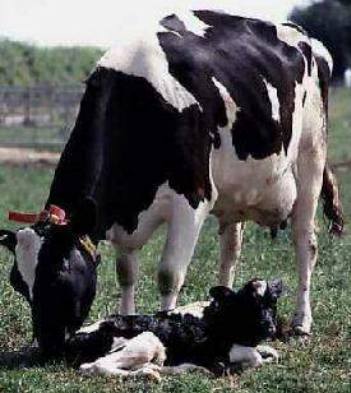 ew RWN Protected Fat Range
ew RWN Protected Fat Range
It has become evident in recent years that as well as using fat supplements as a means of raising the dietary energy density we must also consider the means by which the fat is protected, the digestibility of the fat used and also the effect on overall dry matter intake.
There has recently been considerable progress in this complex area of dairy nutrition. Calcium soap fats are well known to decrease overall dry matter intake and high C16 hydrogenated fats and 100% hardened palm fat flakes tend to show reduced digestibility both of which reduces their overall value.
These problems can be overcome by using more advanced Slow Release 50% Fats which are protected by the combination of high quality fatty acids with glucose and other specific sugars on a dry carrier through a special manufacturing process.
Following extensive research and field trialling RWN has taken this technology to the next level with our new F1 Pallafat Elite. F1 Pallafat Elite combines the most advanced slow release fat technology with very high inclusion of aromatic spices.
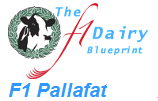 Farmers consistently report that F1 Pallafat Elite stimulates overall dry matter intake compared with other fat supplements. In addition as a result of the method of protection
and the synergistic effect of the different high quality fatty acids used we also see improved fat digestibility along with increased performance, higher milk yields and improved fertility, body condition and compositional quality.
Farmers consistently report that F1 Pallafat Elite stimulates overall dry matter intake compared with other fat supplements. In addition as a result of the method of protection
and the synergistic effect of the different high quality fatty acids used we also see improved fat digestibility along with increased performance, higher milk yields and improved fertility, body condition and compositional quality.
We recommend that you feed F1 Pallafat Elite at 0.4 kg - 0.5 kg per cow per day. F1 Pallafat Elite gives the full palatability response at 2% of dry matter intake. So targeting at 0.4 kg will give the desired effect. At this level F1 Pallafat Elite will supply enough energy for more than 2 litres of milk.
F1 Pallafat Elite - A highly palatable specific blend of fatty acids and glycerene and palatability enhancers on a slow release carrier. Contains high levels of C18 and C16 providing high yielding dairy cows with more energy to maximise performance together with Omega-3 fish oils.
Glycerene is a rumen inert source of glycerol. Glyerol is a glucose precursor which is directly utilised by the liver to increase glucose production. Glucose is required for the production of lactose to maximise milk yield. Fats and oils have to be converted to triglyceride before they can be absorbed from the intestine and glycerol is required for this to happen. The inclusion of glycerene in F1 Pallafat not only increases the utilisation of fats in the diet but also encourages dry matter intake. Increased dry matter intake in early lactation reduces negative energy balance during early lactation.
F1 Pallafat Elite can be more cost effective than Calcium Soap
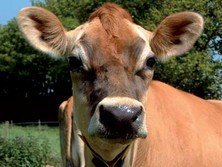 Independent trials have shown
slow release fats on a dry carrier produced milk yields equivalent to calcium soap protected fats but
with a more rapid transition to body weight gain post calving resulting in up to 30kg more live weight
gain at six weeks post calving than standard protected fat based on calcium soap. The sooner cows return
to positive energy balance in
early lactation the sooner they are likely to start cycling and to hold to service. Improved performance
makes F1 Pallafat Elite more cost effective than Calcium Soap.
Independent trials have shown
slow release fats on a dry carrier produced milk yields equivalent to calcium soap protected fats but
with a more rapid transition to body weight gain post calving resulting in up to 30kg more live weight
gain at six weeks post calving than standard protected fat based on calcium soap. The sooner cows return
to positive energy balance in
early lactation the sooner they are likely to start cycling and to hold to service. Improved performance
makes F1 Pallafat Elite more cost effective than Calcium Soap.
F1 Super Fat - An alternative to Pallafat, Super Fat is a very free flowing and pallatable fat supplement based on refined protected palm fats rich in C16 and C18 blended with vegetable oils on a high energy Palm Expeller and Molassed Sugar Beet Pulp carrier. Super Fat offers a very effective means to boost appetite, milk yields and fertility. Cost effective and without the depression in dry matter intakes associated with calcium soap protected fats.
RWN Extra Fat - Our most cost effective quality slow release fat. Extra Fat is based on a combination of vegetable oils and fish oil on a dry carrier. This approach has been demonstrated to produce milk yields equivalent to calcium soap protected fats but with improved dry matter intake and reduced losses in body condition during early lactation.
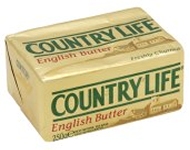 RWN
Butterfat Plus - A highly palatable, high energy C16 fat supplement based on F1 Pallafat Elite
designed to raise butterfats as well as milk yield. The positive effect on DMI encourages high forage
intakes both reducing ration costs and enhancing butterfats. Butterfat Plus C16 has a high energy content
to encourage milk yield and a high C16 fat profile making it very effective in lifting butterfat percentage.
RWN Butterfat Plus can replace traditional high C16 hard palm fats one for one. Feed at up to 500gms
/ cow for high butter fats.
RWN
Butterfat Plus - A highly palatable, high energy C16 fat supplement based on F1 Pallafat Elite
designed to raise butterfats as well as milk yield. The positive effect on DMI encourages high forage
intakes both reducing ration costs and enhancing butterfats. Butterfat Plus C16 has a high energy content
to encourage milk yield and a high C16 fat profile making it very effective in lifting butterfat percentage.
RWN Butterfat Plus can replace traditional high C16 hard palm fats one for one. Feed at up to 500gms
/ cow for high butter fats.
Slow Release Fatty Acid Combinations
As well as using fat supplements as a means of raising the dietary energy density we must also consider the need for specific fatty acids. All fats are made up of combinations of different fatty acids. The body requires specific amino acids and likewise requires specific fatty acids. These different fatty acids have an important role in the nutrition of the high producing cow. Fat supplements which provide a balanced range of fatty acids create a potentially greater value than simply feeding palm fat to increase energy density in the dairy diet.
All fatty acids will increase the energy density of a cows diet, however there are many considerations
above and beyond the ME value of the fat supplement and the price per tonne. Digestibility of different
fat sources ranges from less than 50% to over 90% with unsaturate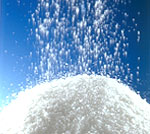 d fats being more digestible in the
small intestine than saturated fatty acids.
d fats being more digestible in the
small intestine than saturated fatty acids.
The ratio of polyunsaturated to saturated fat should be close to 2:1. In addition the ratios of fatty acids themselves are important and can result in a synergistic effect giving a more pronounced response than from feeding palm fat alone. Certain fatty acids have a positive effect on rumen efficiency and long chain fatty acids are converted to milk triglycerides much more efficiently than short chain fatty acid.
Whilst C18 fatty acids are milk yield positive promoting milk volume first and then fertility and body condition and to a lesser extent butterfat, C16 fatty acids are butterfat positive but have less of an effect on milk yield, fertility or body condition.
High yielding cows require both enough total fat to meet their overall energy requirement and sufficient C16 palmitic acid for butterfat production. The mammary gland is most efficient when 15% - 25% of dietary energy is supplied as long chain fatty acids. However with this level of fat in the diet the supplementary fat does need to be protected in order to avoid impaired rumen function. We also need to be aware that poly unsaturated fatty acids (PUFA) are toxic to some cellulytic rumen bacteria and consequently can depress cellulose digestion and reduce dry matter intake.
Fats and Dairy Cow Fertility
Some fatty acids affect fertility. For example Stearic Acid (C18) increases follicle size and raises progesterone levels. The Omega-6 linoleic acid is required for progesterone production, but too high a level can terminate pregnancy. The Omega-3's EPA and DHA are required and essential, yet modern dairy diets are almost always deficient. A small amount of DHA can be synthesized from α-linolenic acid found in young grass and to a lesser extent in grass silages, but levels of EPA and DHA in maize, wholecrops, concentrates, cereals and oilseeds fall well below requirement.
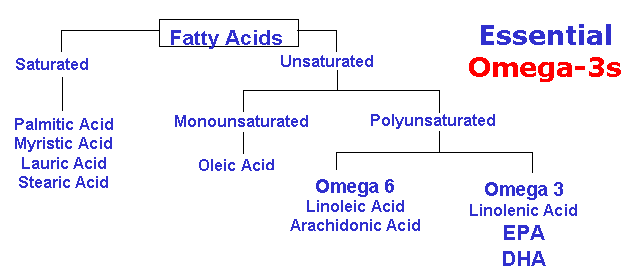
RWN Omega-3 Supplement - A highly palatable supplement containing 50% high Omega-3 fish oil on a dry slow release carrier. Omega-3 and Omega-6 fatty acids are essential in cow diets and cannot be synthesised by the cow. Optomega-3 is a very rich source of the essential Omega-3 fatty acids, Eicosapentaenoic (EPA) and Docosahexaenoic (DHA) which are only available commercially from fish oils. The fish oil used is Salmon Oil which has a much higher concentration of the essential Omega-3 long chain polyunsaturated fatty acids, EPA and DHA than from mixed fish oil sources. Optomega-3 is a very high energy supplement supplying oils of similar energy levels to other protected fats. Optomega-3 is normally fed at 100 - 150gms per cow.
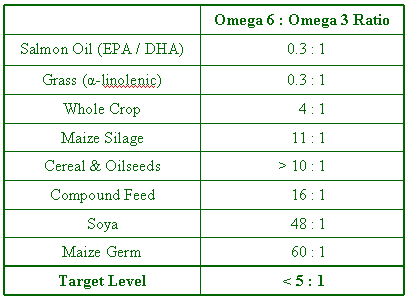
 30
years ago most dairy diets were based on grazing, grass silage and compound feed which contained animal
fats and often fish meal. Today we have higher yielding cows, intensively housed for longer and fed higher
levels of conserved forage, often with maize or wholecrop silages and with a higher proportion of concentrates
in the diet. As a consequence we have drastically reduced the levels of essential Omega-3's in dairy
cow diets. Fertility during this time has declined sharply, especially in high yielding herds and longevity
has reduced.
30
years ago most dairy diets were based on grazing, grass silage and compound feed which contained animal
fats and often fish meal. Today we have higher yielding cows, intensively housed for longer and fed higher
levels of conserved forage, often with maize or wholecrop silages and with a higher proportion of concentrates
in the diet. As a consequence we have drastically reduced the levels of essential Omega-3's in dairy
cow diets. Fertility during this time has declined sharply, especially in high yielding herds and longevity
has reduced.
As can be seen in the table above fish oil and young grass both have a high proportion of Omega-3 to Omega-6 fatty acids. Grass and linseed are high in Omega-3 oil but in the form of alpha linolenic acid rather than the fertility active Omega-3 oils DHA and EPA. Modern dairy diets are deficient in the essential Omega-3's oils. The long chain omega-3 fatty acids DHA & EPA which are only found in high quantities in marine oil increase the production of progesterone, the hormone responsible for embryo implantation. There are, commercially available sources of extruded linseed high in linolenic acid a small amount of which will be converted to DHA in the rumen but only at very low levels usually less than 5%. The only commercially available source of high levels of DHA and EPA Omega-3's are fish oils, and these do contain very high levels of DHA and EPA.
Modern dairy diets are deficient in the essential Omega-3's oils, EPA and DHA
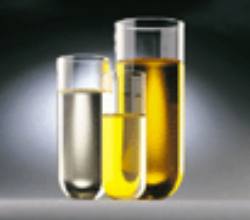 High Omega-3 fish oils are fed principally to improve fertility but in addition to the fertility effects there are a range of other benefits.
High Omega-3 fish oils are fed principally to improve fertility but in addition to the fertility effects there are a range of other benefits.
Feeding long chain Omega-3 and -6 oils increases milk yield. Omega-3's also stimulate the production of very low density lipoproteins(VLDL's) in the liver reducing the level of fat build up. Consequently feeding fish oils tends to reduce the incidence of fatty livers and ketosis and other metabolic disorders associated with early lactation.
Fish oils modify the rumen microflora and have been shown to reduce methane production in the rumen by between 20% and 80% shifts fermentation pattern from acetate towards propionate by up to 24% without any reduction in total VFA production. This results in improved feed efficiency in the rumen.
Increased rumen fermentation efficiency, better feed efficiency and improved
liver function can be expected to reduce Negative Energy Balance (NEB)
during early lactation.
Deficiency in Omega-3's alone, may go along way towards explaining the steady decline in both fertility and longevity in modern dairy systems where cows are increasingly housed and fed large amounts of alternative forages and concentrates. Omega-3's are also very important for immunity, tissue damage repair and have an anti-inflammatory effect. They also tend to improve ease of calving with fewer retained placenta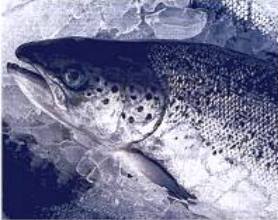 .
.
In addition quite apart from the benefits in terms of energy supply, energy utilisation, increased milk yield and general health benefits, feeding high Omega-3 fish oil favours reproductive processes independent of possible energy effects.
Feeding fish oil triggers the growth of dominant follicles in the ovary enhancing progesterone and strengthening heats. We see earlier cycling, stronger bulling and increased conception. Trials show that fish oil fed from 21 days pre-calving increases bulling and conception by in some cases more than 20 percentage points. Fish oil also suppresses prostaglandin production improving maternal recognition of pregnancy resulting in reduced embryo loss.
The high Omega fish oils in Optomega-3 can effectively help to support
both herd health and fertility
Which Fat Where?
F1 Pallafat Elite - The most cost effective quality fat for general use to increase dairy cow performance, fertility, butterfat and body condition. High in Omega-3 oils. Feed at 350 - 600 gms / cow or replace calcium soaps protected fats one for one.
F1 Super Fat - Use as an alternative to Pallafat to boost energy density, to lift milk yields, and to improve body condition, milk quality and fertility. Super Fat is especially appropriate to compliment diets high in unsaturated oils, for example where there are high inclusion rates of brewers grains, distillers, maize germ or biscuit meals, or where a very free flowing product is required for top dressing. Feed at 350 - 600 gms / cow or replace calcium soaps protected fats one for one.
RWN Extra Fat - Use at 350 - 600 gms / cow to boost energy density of the diet or to replace calcium soaps protected fats one for one.
RWN Butterfat Plus - Use where there is a specific need for a high C16 supplement to maximise both milk yield and butterfat percentage. Feed at 350 - 600 gms / cow. Effectively replaces conventional C16 fats.
RWN Omega-3 - Feed at 100 - 150 gms / cow to increase bulling, conception and overall herd fertility, general immune response, ease of calving, retained cleansings, fatty livers and cow health. Feed from calving until confirmed in calf or for best results feed from 3 weeks pre-calving and throughout lactation. Feed alone or with other fat supplements such as calcium soap protected fats and C16 palm fats.
Contact Richard Webster for further information on the suitability of protected fats and Omega-3 fish oils in your diets.
Full nutritional support package free of charge to customers along with the most extensive range of high quality feed inputs available
